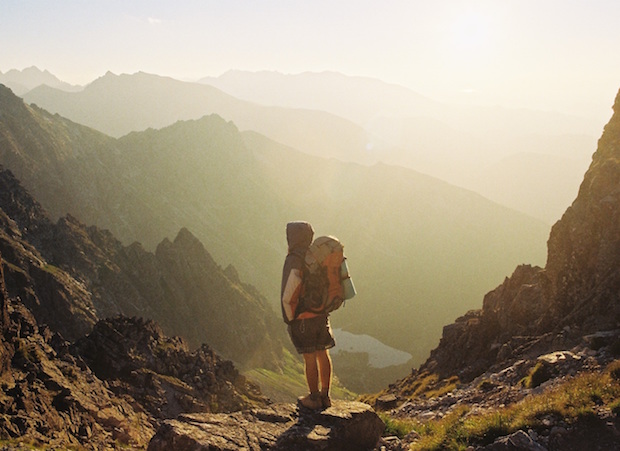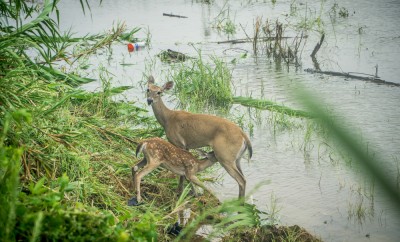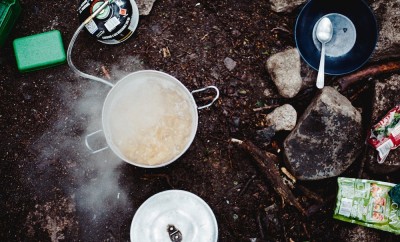Adventure Travel
Is it safe to visit national parks alone?

To say “national park” is to summon visions of pristine waterways, breathtaking vistas and gorgeous natural palaces. You might think of the Grand Canyon, Yosemite, Yellowstone, the Redwoods, the Rockies and Niagara Falls.
But stories abound about how dangerous these areas can be. While we have managed to tame many of these areas, the point is to leave as much of them as wild as possible. And wild can mean dangerous.
The dangers of the outdoors
Take the high-profile case of August 2015’s attack at Yellowstone, where a man was killed by a bear while out hiking. The curious thing about the Yellowstone incident is that he was a veteran hiker and an employee of the medical clinics in the park.
Anyone who’s been to Yellowstone knows the big deal they make about going out in groups of at least three. With bear mace. One of the tips they also give is to be sure to make as much noise as possible to not startle or walk up on bears, even going so far as to call out to them at random. Yet this man was found dead and partially eaten. Between 1980 and 2011, 32 people have been injured by grizzly bears at Yellowstone. The park even has a policy of euthanizing bears if it is believed that the bear specifically thought of a person as a food source.
Perhaps the most troubling is would-be “pranksters” who’ve been known to booby trap hiking trails. One of the most disturbing stories comes out of Oregon in the fall of 2014, where some men tried to set up a trip wire along a trail leading into Forest Park that would fire a gun. Luckily, the device failed to fire.
Before that was the high profile news in spring of 2012, when two men thought it would be funny to booby trap Big Springs Trail in Utah, though they claim it was for wildlife. A trip wire was set to release a crude ball of sharpened sticks that looked like it was a medieval mace thrown together by cavemen.
So all of this begs the question: is it safe to hike alone, especially in national parks, some of the most wild areas we have left?
Truthfully, none of this is to say you should never leave your home to go enjoy the splendor of nature. It just means you need to be aware while you’re out there.
Hiking safety
The fact of life is that anytime you leave your home, you’re at risk for catastrophe. (And while you’re home, too.) Anything can be dangerous if you’re not careful. Below are some guidelines to keep you safe while out hiking.
- Follow the rules of the park. The answer to whether you should visit the national parks alone is “it depends.” If a park says to hike in groups of three or more due to bear threats, hike in groups of three or more. On the other hand, if you’re just going to the Grand Canyon to see it from a clearly designated lookout point, your risks are a lot lower. Always read the park literature for safely guidelines, and stick to the trails.
- If you do venture alone, stay connected. Always tell others where you are going and leave an itinerary, if you can. Carry a cell phone and try not to go out of range. There’s no need to reenact “127 Hours.”
- Do your research. Check local weather before you go, know the type of footwear you’ll need based on the terrain, and know the general climate of where you’re going and plan accordingly (ex. don’t leave your water bottle behind if you’re in a desert region). Research as if your life depends on it because it could.
- Stay flexible. If the weather takes a turn for the worst, you hit fatigue earlier than you thought you would, or some other unforeseen event strikes, don’t be afraid to turn back early.
- Remember the buddy system for risky hikes. If you’re going on a long trail, unfamiliar terrain, an area known for aggressive wildlife, are in an extreme climate, or there are any other highly hazardous conditions, go with a group and stay as group. Hike as fast as your slowest group member.
- Prep for emergencies like injuries, bad weather, or getting lost. Carry a first aid kit. Also, good items to remember in general are a map, compass, cell phone, extra food, rain gear, waterproof matches or striker, a Swiss Army knife, a flashlight, sunscreen and a blanket for a makeshift shelter.
Some of this may seem paranoid, but one wrong turn in a large wilderness area could mean being in a situation you hadn’t intended. Ideally, you won’t need your extra precautions, and you’ll end up with a day of breathtaking natural beauty.





0 comments